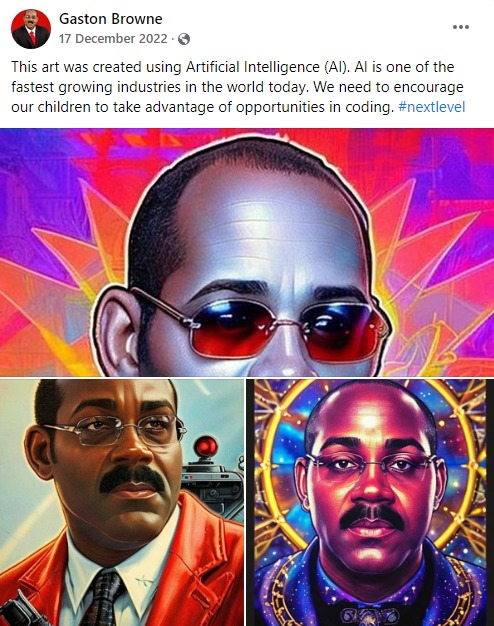
By Robert A. Emmanuel
Two local artists have shared their opinion of recent technological advancements in artificial intelligence (AI) generated art, arguing that while there are concerns over its usage, human creativity cannot be taken over by technology.
Art, which has long been an activity performed by humans, has found itself in the hands of technology with many AI developers creating algorithms to generate human-like images, structures and designs.
Observer media spoke to two artists about their thoughts on the topic—Dylan Philips and Marc Xavier.
Philips, a professional painter for two years using acrylics and water colours, said AI-generated art was an issue if copyrighted artistic materials were used in the process.
“AI art, itself, is not the issue…the issue with it would have to come down to the way it is being used, especially commercially.
“A lot of the programmes basically scrape images—compiling thousands of images from different artists,” he said.
This technology has enabled many people with little artistic ability to design works of art and express their thoughts in this manner.
However, he said that while this was a worry for artists, he argued that there was still a need for the human creative mind in artistic designs.
“Nothing can really take away the human element from art. At the end of the day, I would like to believe that most people would prefer to get a piece of art from human beings as opposed to a machine,” he argued.
He gave the example of the designing of human hands, stating “the AI has an issue drawing hands…today as an artist, you have to understand the mechanism of the hands itself—the muscles, bones, the way it is structured.
“Whereas an AI, they will render the hand based on what they think a hand should look like,” he said.
Many industries have started to use the technology as part of their creation process, including fashion designers.
Observer also spoke to Xavier who has been an artist for four years doing acrylics painting, ink work and the occasional visual work, and has a computer science background.
Xavier spoke about the lack of legal framework regulating the use of the technology regarding copyrighted material.
“Art, on the whole, tends to have this vague situation with its likeness…some of the people I noticed initially were a little demotivated with the idea of some of their commissions going because the AI could be trained to do the portrait,” he said.
With AI generators such as DALL-E and Lensa gaining popularity last year, many artists have been concerned over the reduction in commissions.
Xavier argued for the development of regulation to ensure copyright-free images, similar to AI-generated music.
“I initially thought it would be similar to AI-generated music; I did not like how the [developers] trained the AI on everything, not just royalty-free work,” he said.
Another issue raised by Xavier was the use of real likeness of faces which he considered a security risk.
“The biggest concern with the AI using the likeness of someone’s face was that it also allows you to use that same likeness and sell it to a third party,” he said, noting the rise of deepfakes.
In Antigua and Barbuda, social media has been filled with AI-generated portraits of individuals, with even Prime Minister Gaston Browne encouraging youth to learn coding as part of getting involved in developing AI-generated tools.
